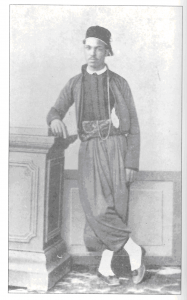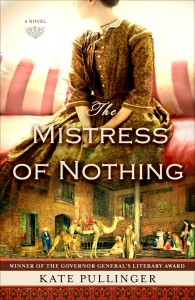A Community for Curious Minds who love History, its Odd Stories, and Good Reads
A Community for Curious Minds who love History, its Odd Stories, and Good Reads
By Holly Tucker
 There are few images of British domestic servants from the Victorian period. The great and good were forever having portraits of themselves commissioned, from line drawings to magisterial oil paintings, but representations of servants are few and far between. Of the three main characters in my novel, only Lucie, Lady Duff Gordon, has a range of portraits, from sketches done when she was a child, to Henry Phillip’s portrait which still hangs in the National Portrait Gallery in London. There is a photograph of Omar Abu Halaweh, her Egyptian manservant, and I spent a lot of time staring at that photo, trying to see into his soul. It’s a formal studio portrait, but Omar’s pose is amusing, and his half-smile makes him look like a young Will Smith.
There are few images of British domestic servants from the Victorian period. The great and good were forever having portraits of themselves commissioned, from line drawings to magisterial oil paintings, but representations of servants are few and far between. Of the three main characters in my novel, only Lucie, Lady Duff Gordon, has a range of portraits, from sketches done when she was a child, to Henry Phillip’s portrait which still hangs in the National Portrait Gallery in London. There is a photograph of Omar Abu Halaweh, her Egyptian manservant, and I spent a lot of time staring at that photo, trying to see into his soul. It’s a formal studio portrait, but Omar’s pose is amusing, and his half-smile makes him look like a young Will Smith.
